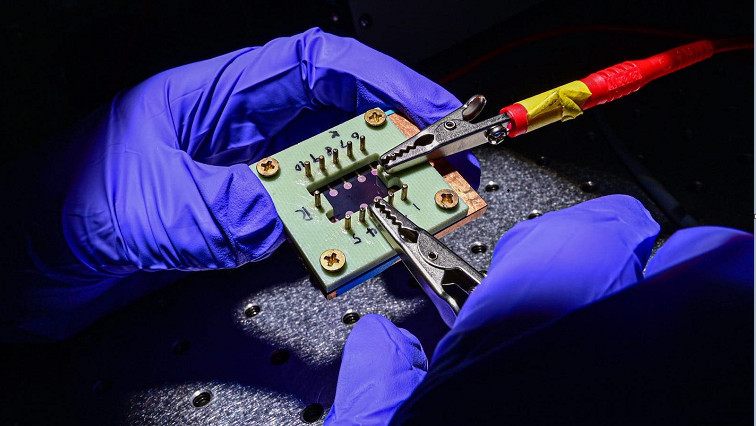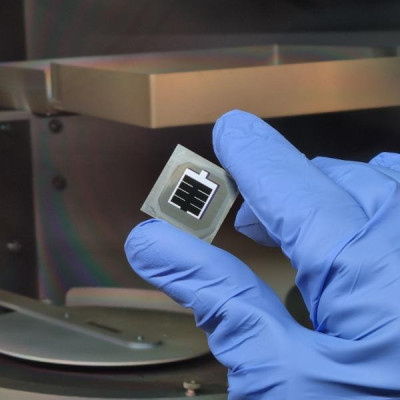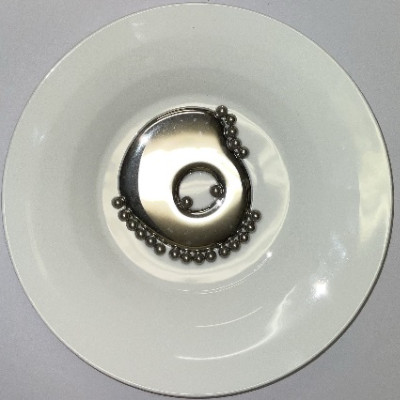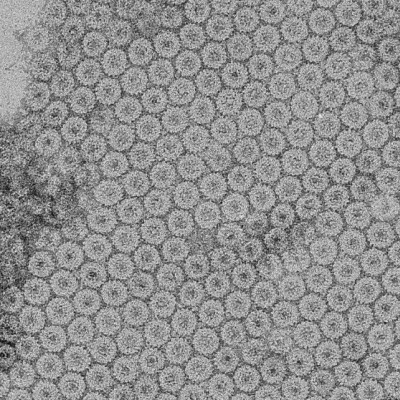Perovskite Solar Cell To The Rescue
For those of you new to the topic, perovskite is a naturally occurring mineral with unique optical properties that make it ideal for PV applications.
Research on perovskite solar cells only began in earnest about 10 years ago, with the US Department of Energy among those in hot pursuit. The results have been impressive. The solar conversion efficiency of a perovskite solar cell leaped from a lowly 3% to more than 25% over that 10-year time span. In contrast, the solar cell semiconductors currently in use took about 60 years to reach the 25% benchmark.
To gild the clean tech lily, synthetic crystalline materials that mimic perovskite are relatively easy and inexpensive to grow.
Army, Navy Join The 2-D Perovskite Solar Cell Team
There being no such thing as a free lunch, “raw” perovskite tends to fall apart when exposed to humidity and sunlight. That complicates matters for the R&D phase, but it is not an insurmountable problem. Researchers have already figured out a suite of workarounds that can bring perovskite solar cells to market.
The remaining conundrum is how to build durability into a perovskite solar cell without sacrificing solar conversion efficiency.
That brings us to Army-Navy mashup, which has helped bring about the Mother of All Workarounds: a two-dimensional perovskite solar cell formula that gains durability and efficiency when exposed to sunlight, instead of losing it.
The Army Research Office and the Office of Naval Research provided financial support for the new perovskite research, along with the National Science Foundation and the Energy Department’s Office of Science.
The heavy lifting was done by a team of engineers working out of the lab of Aditya Mohite, at the George R. Brown School of Engineering at Rice University. Here, let’s have Rice explain:
“The lab of Aditya Mohite of Rice’s George R. Brown School of Engineering discovered that sunlight itself contracts the space between atomic layers in 2D perovskites enough to improve the material’s photovoltaic efficiency by up to 18%, an astounding leap in a field where progress is often measured in fractions of a percent.”
For the record, the project was a collaborative one that also involved Purdue and Northwestern universities, too. The Energy Department also chipped in with a hand from its Los Alamos, Argonne and Brookhaven laboratories. An assist from the Institute of Electronics and Digital Technologies in France made it an international affair, with additional support from the Academic Institute of France.
The 2-D Perovskite PV Solution: How It Works
The Rice team built their new 2-D perovskite solar cell on previous research indicating a pathway for balancing durability with efficiency.
“We’ve been working for many years and continue to work with bulk perovskites that are very efficient but not as stable. In contrast, 2D
perovskites have tremendous stability but are not efficient enough to put on a roof,” explains Mohite.
Recent iterations of perovskite solar technology have added 2-D structures to enhance stability. The Rice team decided to do away with the 3-D “bulk” structure and go straight for the 2-D. That’s when the magic happened.
“We find that as you light the material, you kind of squeeze it like a sponge and bring the layers together to enhance the charge transport in that direction,” said Mohite.
“This effect has given us the opportunity to understand and tailor these fundamental light-matter interactions without creating complex heterostructures like stacked 2D transition metal dichalcogenides,” he added.
The actual amount of squeezing is minuscule, but it makes a big difference. After exposure to a solar simulator, the team’s perovskite lattice contracted about 0.4% lengthwise and 1.0% vertically.
“It doesn’t sound like a lot, but this 1% contraction in the lattice spacing induces a large enhancement of electron flow,” said co-lead author Wenbin Li, who is a Rice Applied Physics graduate student. “Our research shows a threefold increase in the electron conduction of the material.”
The lattice also quickly resumed its normal shape after the light was removed, indicating improved durability compared to 3-D versions.
Group Hug For US Taxpayers
Circling back around to that thing about a 10-year timeline to 25% conversion efficiency compared to 60 years, that kind of accelerated clean tech R&D will sure come in handy now that the people of the Earth only have about a 10-year window for preventing catastrophic climate change.
In the perovskite field, part of the credit does go to the material itself. A quantum leap in materials science in the past 30 years has also factored in, including the introduction of new, more powerful diagnostic tools funded by the taxpaying public, so group hug for us.
For example, Argonne National Laboratory physicist Joe Strzalka, who is a co-author on the new solar cell study, credits the “ultrabright” X-rays of the lab’s Advanced Photon Source with enabling the team to observe nanoscale changes in the structure of their perovskites in real time.
“For changes like this, it’s important to do operando studies,” Strzalka adds. “The same way your mechanic wants to run your engine to see what’s happening inside it, we want to essentially take a video of this transformation instead of a single snapshot.”
“The sensitive instruments at beamline 8-ID-E of the APS allow for ‘operando’ studies, meaning those conducted while the device is undergoing controlled changes in temperature or environment under normal operating conditions,” Rice University adds.
APS was built in the 1990s, and apparently you ain’t seen nothing yet.
“A comprehensive upgrade to the facility’s electron storage ring, scheduled to begin in April 2023, will increase the brightness of those X-rays by up to 500 times and will enable new discoveries and innovations we cannot yet imagine,” Argonne enthuses. “New beamlines and enhancements will further expand the capabilities of the APS, and keep it at the forefront of global X-ray science.”
Accelerating Climate Action In The US
The Rice team anticipates that the new, improved APS will help propel them into the next step up the R&D ladder.
“We’re on a path to get greater than 20% efficiency by engineering the cations and interfaces,” Sidhik explains. “It would change everything in the field of perovskites, because then people would begin to use 2D perovskites for 2D perovskite/silicon and 2D/3D perovskite tandems, which could enable efficiencies approaching 30%.”
It’s unfortunate that President Joe Biden’s Build Back Better climate action bill is being held in limbo, but the new perovskite research is just one among many initiatives that is baking climate action into national policy, through the deep pockets of the Department of Defense.
In addition to numerous clean tech initiatives undertaken by the Army and the Navy, the US Air Force is also pushing the clean tech envelope into new territory.
Read the original article on CleanTechnica.







